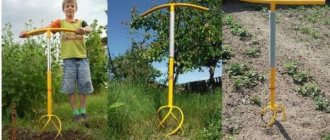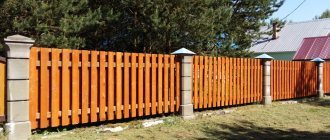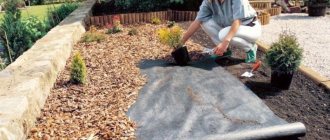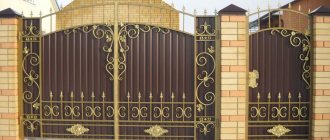- agricultural machine for tillage.
Cultivators are divided into steam
and
row-crop cultivators
. Steam cultivators are used for continuous cultivation of the soil before sowing, and row cultivators are used for cultivating crops. With the help of cultivators, loosening, weed control, moisture conservation, and hilling are carried out. Unlike a plow, a cultivator performs loosening without turning over the formation.
Cultivators can be equipped with passive (stationary) knives that perform work due to traction, as well as with active (driven) knives. Based on the type of drive, there are manual cultivators, motor cultivators, and cultivators mounted with a tractor.
Motor cultivator
Motor cultivator
is a power unit designed for cultivating soil with cutters. If we compare a motor-cultivator with a walk-behind tractor, the second one is more powerful and has a larger number of attachments in its arsenal and, accordingly, is more functional; walk-behind tractors have a gearbox and are capable of transporting people or cargo in an attached trolley. Due to its greater power, a walk-behind tractor can perform more complex work than a walk-behind cultivator, but the walk-behind tractor is much heavier, and a person gets tired faster. Motorized cultivators make it possible to work productively in limited areas of the territory, between rows, in flower beds and near trees.
Modern motor cultivators are equipped with various types of compact engines - gasoline two- and four-stroke, diesel, electric, powered by an electrical network or from a built-in battery.
Motorized cultivators are used everywhere, from small and medium-sized garden plots to large farms. Based on this, manufacturers produce light, medium, professional (heavy) motor cultivators.
How to choose an electric one?
This is perhaps one of the easiest cultivators to use. Let's start with the positives. Of course, the main thing is that you do not need to pay for gasoline and oil, as is the case with a gasoline cultivator. All you need is an outlet and a cable. The only expenses are for electricity.
Then it's relative noiselessness. Again, compared to a gasoline cultivator, the noise level of an electric cultivator is relatively low. If you need to work close to home, then you don’t have to worry, because in this type of cultivator there are no unpleasant exhausts or gasoline fumes, this is just a wonderful plus.
Electric
Choosing an electric cultivator for your dacha is not such a difficult problem. Such a cultivator weighs relatively little, from seven to forty kilograms, therefore, even a woman can operate it. Its size is very convenient and it is easy to carry from place to place, or even transport.
Electric cultivators Mantis and Loplosh are excellent units, they have good performance, and in a sense they can be called environmental. Especially if you cultivate the soil indoors. This cultivator will not harm your health.
Forest cultivators
Forest cultivators are designed for soil reclamation in plots (forest areas) allocated after clear-cutting for use. The peculiarity of such work lies in the obviously more difficult conditions: the presence of a large number of stumps and logging residues. The Scandinavian countries and the North-Western regions of Russia are characterized by rocky areas. All these conditions were taken into account when creating forest cultivators. The leading and practically the only company producing such machines since 1922 is the Swedish company Bracke Forest AB, whose production is located in Brekke, Jämtland County. Previously, until 2004, known as Robur Maskin AB.
Such cultivators are installed on forestry machines - forwarders and skidders of various manufacturers. The executive bodies of such equipment are driven by the hydraulic system of the base machine. Control is carried out through a modern and at the same time quite simple computerized system of our own development, Bracke Growth Control.
There are two types of cultivators: disc cultivators and discrete micro-raising cultivators. The first type refers to harrows with an active drive to a loosening disc. The second type of cultivator is based on the implementation of the theory of micro-increases - a double inverted layer of humus, a specially created seat with optimal conditions for the rapid growth of seedlings.
- Kerner Komet Grubber.jpg
Share cultivator
- Pöttinger Synkro3000S.jpg
Cultivator with pointed tines
- Gänsefußschar.jpg
Pointed foot
- Flügelschar.jpg
Another type of pointed paw
- Gasoline cultivator.jpg
Small-sized motor cultivator
- Mole 2.jpg
Motor cultivator "Mole"
What are they used for?
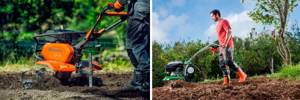
Until the end of the 20th century, most summer residents used hand tools: rakes, shovels. Pre-cultivation of the soil took days or weeks, depending on the size of the plot. Motorized cultivators made it possible to reduce the time of loosening and other necessary operations by several times.
What functions can the unit perform:
- weeding - working cutters go deep into the soil by about 80-100 mm, grinding weeds and their roots;
- aeration of the site - during loosening the soil is saturated with oxygen, which will have a beneficial effect on the quality of the crop in the future;
- haymaking is a necessary activity for preparing feed; for this there are special attachments for the cultivator;
- deep plowing or surface loosening - also carried out using attachments - blades or cutters;
- hilling, harvesting potatoes - the cultivator will help you quickly cultivate the land or harvest even on a large plot;
- collecting grass after mowing - the unit, if equipped with a special rake, will make it possible to collect future hay;
- watering - if you have a water pump, you can speed up the process of moistening the soil;
- transportation of goods - a gasoline engine will help the owner move a tool or crop around the site.
Before purchasing the unit, you should check with the seller which attachments are included. This depends on the specific model and manufacturer.
Excerpt characterizing the Cultivator
-What division are you in? - the adjutant shouted as he drove up. - Eighteenth. - So why are you here? You should have been ahead a long time ago, now you won’t make it until evening. - Those orders are stupid; “They don’t know what they’re doing,” the officer said and drove off. Then a general drove by and shouted something angrily, not in Russian. “Tafa lafa, you can’t understand what he’s muttering,” said the soldier, mimicking the departed general. - I would shoot them, scoundrels! “We were told to be there at nine o’clock, but we weren’t even halfway through.” These are the orders! - repeated from different sides. And the feeling of energy with which the troops went into action began to turn into annoyance and anger at the stupid orders and at the Germans. The reason for the confusion was that while the Austrian cavalry was moving on the left flank, the higher authorities found that our center was too far from the right flank, and the entire cavalry was ordered to move to the right side. Several thousand cavalry advanced ahead of the infantry, and the infantry had to wait. Ahead there was a clash between the Austrian column leader and the Russian general. The Russian general shouted, demanding that the cavalry be stopped; the Austrian argued that it was not he who was to blame, but the higher authorities. Meanwhile, the troops stood, bored and discouraged. After an hour's delay, the troops finally moved further and began to descend down the mountain. The fog that dispersed on the mountain only spread thicker in the lower areas where the troops descended. Ahead, in the fog, one shot was heard, then another, at first awkwardly at different intervals: draft... tat, and then more and more smoothly and more often, and the matter began over the Goldbach River. Not expecting to meet the enemy below the river and accidentally stumbling upon him in the fog, not hearing a word of inspiration from the highest commanders, with the consciousness spreading throughout the troops that it was too late, and, most importantly, in the thick fog not seeing anything ahead and around them, the Russians lazily and slowly exchanged fire with the enemy, moved forward and stopped again, not receiving orders from the commanders and adjutants, who were wandering through the fog in an unfamiliar area, not finding their units of troops. Thus began the case for the first, second and third columns that went down. The fourth column, with Kutuzov himself, stood on the Pratsen Heights. At the bottom, where the matter began, there was still a thick fog, at the top it had cleared, but nothing was visible from what was happening ahead. Whether all the enemy forces, as we assumed, were ten miles away from us or whether he was here, in this line of fog, no one knew until the ninth hour. It was 9 o'clock in the morning. The fog spread like a continuous sea along the bottom, but near the village of Šlapanice, at the height at which Napoleon stood, surrounded by his marshals, it was completely light. Above him was a clear, blue sky, and a huge ball of the sun, like a huge hollow crimson float, swayed on the surface of a milky sea of fog. Not only all the French troops, but Napoleon himself and his headquarters were located on the wrong side of the streams and the bottoms of the villages of Sokolnitz and Shlapanits, behind which we intended to take a position and begin business, but on this side, so close to our troops that Napoleon could in our army to distinguish horse from foot. Napoleon stood somewhat ahead of his marshals on a small gray Arabian horse, wearing a blue overcoat, the same one in which he fought the Italian campaign. He silently peered into the hills, which seemed to protrude from a sea of fog, and along which Russian troops were moving in the distance, and listened to the sounds of shooting in the ravine. At that time, his still thin face did not move a single muscle; the shining eyes were motionless fixed on one place. His assumptions turned out to be correct. Some of the Russian troops had already descended into the ravine to the ponds and lakes, and some were clearing those Pratsen heights, which he intended to attack and considered to be the key to the position. He saw, in the midst of the fog, how, in a depression made up of two mountains near the village of Prats, Russian columns, all moving in one direction towards the hollows, bayonets shining, disappeared one after another into the sea of fog. According to the information he received in the evening, from the sounds of wheels and footsteps heard at night at the outposts, from the disorderly movement of the Russian columns, from all assumptions, he clearly saw that the allies considered him far ahead of them, that the columns moving near Pratzen formed the center of the Russian army, and that the center is already weakened enough to attack it successfully. But he still hadn't started the business.
About the device
With such a large assortment, it is very difficult to choose the most reliable and popular motor cultivators , but by following this article, you will not have any difficulties in this matter.
Not many people know the difference between a walk-behind tractor and a cultivator. A cultivator is a device that helps you cultivate the soil efficiently, remove weeds, form beds and much more.
They are very easy to manage, and in addition they are highly effective in their work. The big advantage of a cultivator is that it saves your health, nerves, time and energy. These units are used for cultivating vegetables, berries, potatoes, and so on.
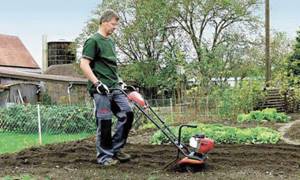
Cultivator
The cultivator is an excellent substitute for a shovel; at the same time, it wonderfully cultivates the soil, makes it soft, and also removes weeds, which is a significant plus. However, this technique costs a lot of money, unfortunately.
Depending on the size of your future cultivator, you will be able to cultivate hard-to-reach areas of land that cannot be easily cultivated, places between bushes, flower beds, inaccessible places in greenhouses, and so on.
Also, if you buy a high-quality electric cultivator, manual, for the garden to cultivate the land, you will not have to worry about the fact that it can easily and quickly break.
A quality cultivator has a stable, strong design and reliable build quality.
For more information about the operation of the cultivator, watch the video:
In addition, cultivators have various additional features that will help you achieve the ideal garden or vegetable garden.
I would like to note that the cultivator is also used to level, fertilize the soil and dig up crops. This unit is very functional, and if you have a summer house, then you will definitely need it. It is clear that the cultivator is smaller than the same walk-behind tractor.
Cultivator sizes vary from eight to forty-five kilograms. You should definitely pay attention to this.
Even a woman can handle a cultivator weighing from eight to twelve, but men can handle larger units.
He also digs up the soil to a depth of twenty-five to thirty centimeters. That is, driving such a machine will not make it very difficult for you.
To choose a cultivator, you need to know what types of manual cultivators exist in general.
Cultivators are divided into three types: light, medium and heavy cultivators.
A light cultivator is a unit that can plow no more than thirteen acres. The downside is that such cultivators will not plow deep soil. They can plow no more than twenty centimeters. The advantage is that they are not very heavy, and you can easily carry them to the place you need.
The average cultivator will be able to plow a maximum of fifty acres. Such a machine weighs more and is harder to carry (for example, a Viking cultivator).
A heavy cultivator is the most suitable option in terms of quality. He weighs more than ninety-five kilograms. I would like to note that it has great power, and with this unit you can use additional equipment.
